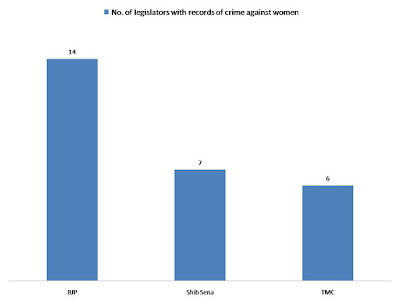Emile Durkheim in his positivist philosophy tried to explore
broad tendencies of society. For him, society was like a physical object and
hence required objective methodologies like that of physical and chemical
sciences. His approach has long been abandoned (?) with the rise of various hermeneutic
and interpretative approaches. Approaches which advocate more on the fact that
human beings construct their world continuously and are subjective beings. Such
contention holds to be the dominant paradigm in much of the social science
research and practices of today. The value of objective assessment is not,
however, gone completely out of fasion. Social scientists are expected to talk through broad
data as well, not because they add seriousness to one’s report, but because
they indicate things. It is nevertheless often important to find what does it
indicate?
While India is shocked with the rape inside of a temple and
several disturbing cases of violence against children, NCRB (National Crime
Register Bureau) shows even more depressing picture. Let me share with you what I
could compile through not so beautiful figures in the following.
Of course, following Durkheim I
would not just stop here and let you people to see for yourself how India is
rapidly becoming one of the most unsafe countries for children. I would rather
like to pin point towards a few things.
First, structural violence is quite prominent. While there was intolerances among the citizens of this
country based on differences in food habit, religion, caste and so on, now,
perhaps we have entered into a time when children are made soft targets to
install fear within the community itself. Needless to mention, the Kathua case
clearly reflect such a contention. Second, administrative inaction, as well as corrupt practices within the system have encouraged perpetrators as they clearly know an insignificant portion of the perpetrators will finally get punished. However, with increasing number of people from within the system becoming involved in such crimes, chances of its increase can be anticipated.
In a report by Association for Democratic Reforms (ADR) shows how clearly and with an indifferent attitude BJP tops the rank of having highest number of elected representatives with charges of crimes against women. If we have a closer look at the states where such crimes are more frequent such association becomes clear (click here for the details).
Third, it is perhaps time to see if there is any association between free unlimited internet and increase in crime. While India has experienced a mobile revolution with Jio effect, it is perhaps the time to introspect the patterns of mobile usage. In fact Jio revolution and such stark increase in violence against chilren and women is roughly parallel. With unlimited data there is every chance of over exposure to violent, and sexually explicit content by the teenagers. Perhaps, in many of the recent cases we have seen an increasing involvement of the young adults. It is important to explore whether violent web content and pornographies through free internet is playing a role.
NCRB data, needs to be looked at seriously, as there is hardly any come back from the present pathway unless the country does a serious introspection.
SEE ALSO: rapes as instruments in this link: http://sumanparole.blogspot.in/2018/04/rapes-as-instruments-indias-chances-of.html






No comments:
Post a Comment